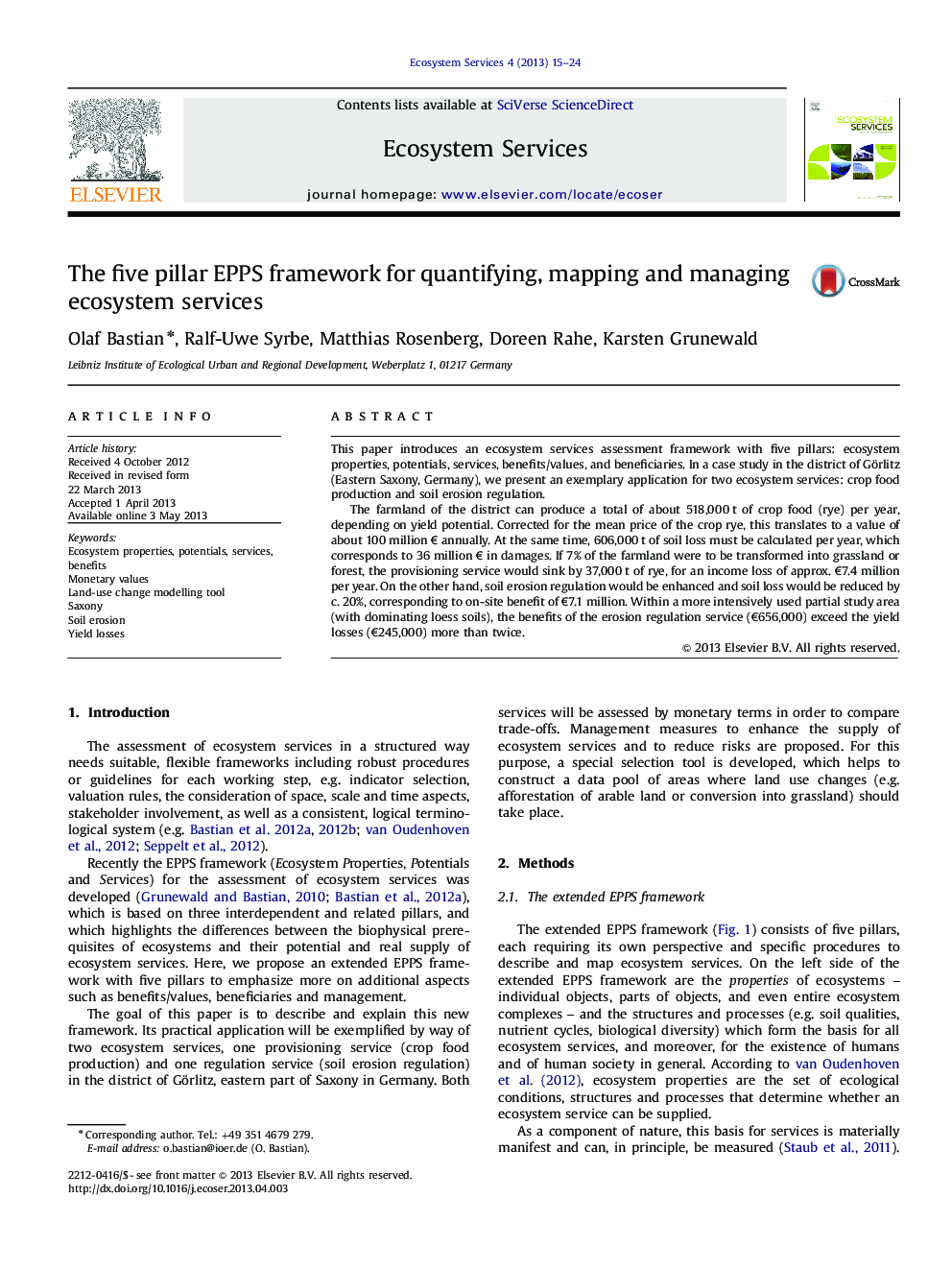| کد مقاله | کد نشریه | سال انتشار | مقاله انگلیسی | نسخه تمام متن |
|---|---|---|---|---|
| 108119 | 161854 | 2013 | 10 صفحه PDF | دانلود رایگان |
• Presentation of a modified ecosystem service framework that clearly differentiates between the potential and the actual service supply.
• Monetary and physical assessment (tons of harvested crops, eroded soils) of two services: crop food production and soil erosion regulation.
• Significant role of the reference unit (delineation, size and scale; ecological characteristics) for the benefits and values of ecosystem services
• Taking into account the long-term effects and the off-site effects for society as a whole, positive economic effects (benefit) are possible
This paper introduces an ecosystem services assessment framework with five pillars: ecosystem properties, potentials, services, benefits/values, and beneficiaries. In a case study in the district of Görlitz (Eastern Saxony, Germany), we present an exemplary application for two ecosystem services: crop food production and soil erosion regulation.The farmland of the district can produce a total of about 518,000 t of crop food (rye) per year, depending on yield potential. Corrected for the mean price of the crop rye, this translates to a value of about 100 million € annually. At the same time, 606,000 t of soil loss must be calculated per year, which corresponds to 36 million € in damages. If 7% of the farmland were to be transformed into grassland or forest, the provisioning service would sink by 37,000 t of rye, for an income loss of approx. €7.4 million per year. On the other hand, soil erosion regulation would be enhanced and soil loss would be reduced by c. 20%, corresponding to on-site benefit of €7.1 million. Within a more intensively used partial study area (with dominating loess soils), the benefits of the erosion regulation service (€656,000) exceed the yield losses (€245,000) more than twice.
Journal: Ecosystem Services - Volume 4, June 2013, Pages 15–24
